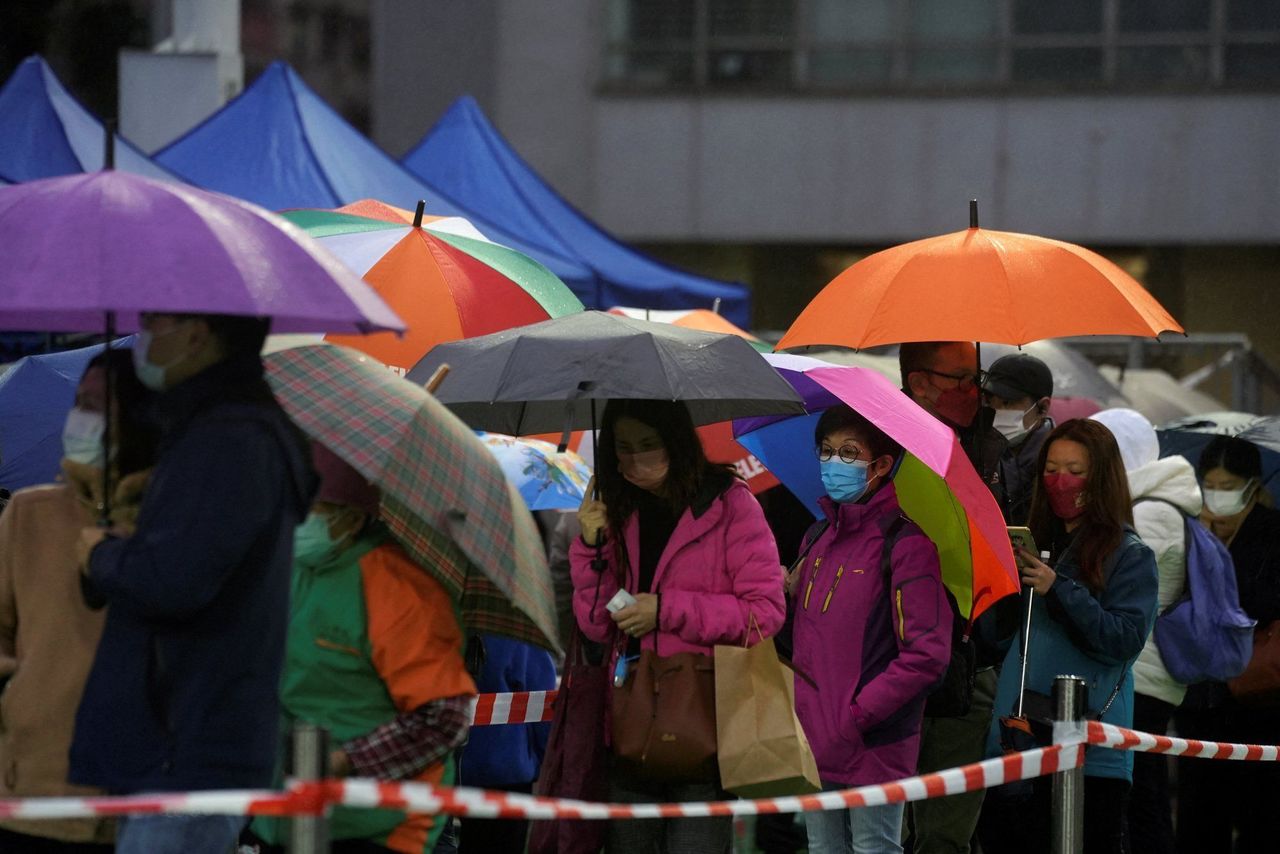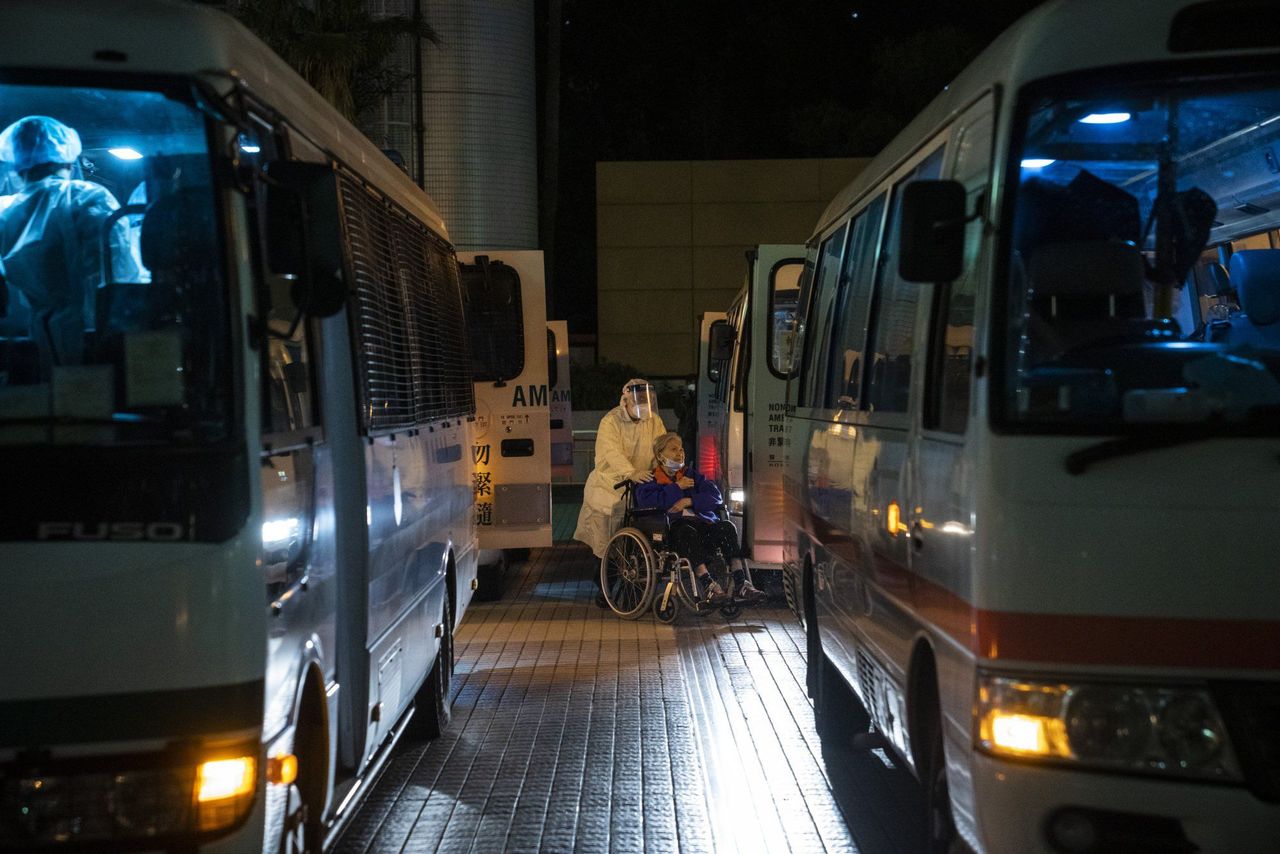Hong Kong News

Hong Kong won’t win Covid-19 fight by blindly following mainland policy
The “dynamic zero Covid” versus “living with the virus” debate has been overtaken by events. Omicron is out in the wild, spreading in malls, trains, buses and lifts. The true number of infections is probably many times the confirmed cases and already outstripping the Hong Kong government’s ability to track, trace and isolate.
Nevertheless, the government seems bent on deploying mainland-style Covid-19 strategies that no longer have any chance of working here.
Say the government goes ahead with its plan to test Hong Kong’s entire population. How exactly will that work? China reportedly tested all 14 million people in Tianjin in 4½ hours. Even with help from mainland testing teams, does anyone think Hong Kong can accomplish anything like that?
Mass PCR testing requires people to congregate at testing centres, creating a fertile environment for mass contagion. One superspreader can infect the entire queue.
We could hand out home test kits, but they are hard to monitor. Most Hongkongers are desperate to avoid being thrown into government isolation facilities and will go to great lengths to avoid submitting a positive result. If people are given the option to pay a fine in lieu of being tested, many will do so.
Waiting until mid-March to commence citywide testing is actually the least of the plan’s drawbacks. With an out-of-control virus, it does not really matter when we roll out pointless mass testing.
Assuming we test everyone, what do we do with all the confirmed cases? Official policy still dictates that all of them (including mild and asymptomatic cases) go into government isolation centres, but these facilities are already full. Adding 20,000 isolation units is not meaningful when we are projected to have more than 20,000 cases per day.
 People in Hong Kong queue in the rain at a makeshift Covid-19 testing centre on February 20.
People in Hong Kong queue in the rain at a makeshift Covid-19 testing centre on February 20.
We could lock down the entire city or implement rolling district-level lockdowns, but studies show that most Covid-19 lockdowns have been an expensive failure. Lockdowns work on the mainland, but China acts fast, when case numbers are much lower.
Moreover, Hong Kong’s infrastructure, population density, subdivided flats, heterogeneous culture, supply chains and international links are all structural impediments to mass lockdowns.
Even with experienced mainland officials now helping to coordinate Hong Kong’s efforts, success is far from assured. Hong Kong frontline workers are inexperienced with mainland techniques and the local populace less pliant. If we are the first Chinese city to utterly fail to contain Covid-19 despite mainland assistance, that is going to look very bad for both Hong Kong and mainland China.
President Xi Jinping told Hong Kong’s government to “take all necessary measures” to ensure the safety and health of Hong Kong’s citizens and the stability of Hong Kong’s society. Notably, he did not tell us to implement policies that have worked on the mainland but are doomed to failure in Hong Kong.
Blindly mimicking mainland China’s Covid-19 policies may seem like the obvious choice for overwhelmed officials, but I doubt Xi wants Hong Kong to double down on a losing hand.
Hong Kong is a special administrative region of China. Hong Kong and the mainland are not supposed to do everything exactly the same. China should use Hong Kong the way the Basic Law intended: as a policy laboratory. We suddenly find ourselves with an opportunity to show China how to manage an endemic virus while very carefully orchestrating a return to normal life.
Here is what the government needs to do. First, shift from mass testing to home isolation. Encourage home testing by eliminating the threat of government quarantine. Let asymptomatic and mild cases as well as close contacts isolate at home, freeing up scarce beds for people who are actually sick.
Second, update the travel policy. We can give the business community a massive boost at no risk to public health by reducing quarantine for inbound travellers to six days (double Omicron’s incubation period). Ten days into my own hotel quarantine, I am currently far more at risk of infection from the nice people who swab my nose every other day than they are at risk from me. We can also ditch all the flight suspensions.
Third, protect the unvaccinated elderly. About 60 per cent of Hongkongers age 80 and above are unvaccinated. Without urgent action, thousands could die. We have no choice but to lock them down until they get vaccinated – quarantine them in their flats with electronic bracelets or sequester them in care homes.
 Residents of a home for the elderly at the Kwai Chung Estate public
housing complex are evacuated to a government quarantine facility in
Hong Kong on January 22, during a lockdown of the estate for several
days.
Residents of a home for the elderly at the Kwai Chung Estate public
housing complex are evacuated to a government quarantine facility in
Hong Kong on January 22, during a lockdown of the estate for several
days.
Caretakers will need to isolate as well, so put them on shifts and pay them the triple wages they deserve.
Quarantining vaccine holdouts will be expensive but a lot cheaper than citywide lockdowns, and just the threat of isolation will spur most to finally get a jab.
Or we could simply require all Hong Kong residents to get vaccinated. Surely the Chinese social compact, which privileges the welfare of the many over the few, means that Hong Kong, a Chinese city, can summon the political backbone needed to insist that the recalcitrant go and get jabbed.
Once we have vaccinated the most vulnerable members of society, we can start easing restrictions on social gatherings and reopening restaurants, schools and playgrounds.
Finally, grab mainland resources. We will need beds, so the makeshift hospital is a great idea. And instead of asking teams from across the border to help with unneeded mass testing, let’s leverage mainland expertise by asking them to help run our scaled-up Covid-19 wards.
Hong Kong has no choice but to start adapting to reality. The bolder and smarter our response to Covid-19, the more Beijing will be impressed, even if the details of our coronavirus policies differ somewhat from what has worked on the mainland.











